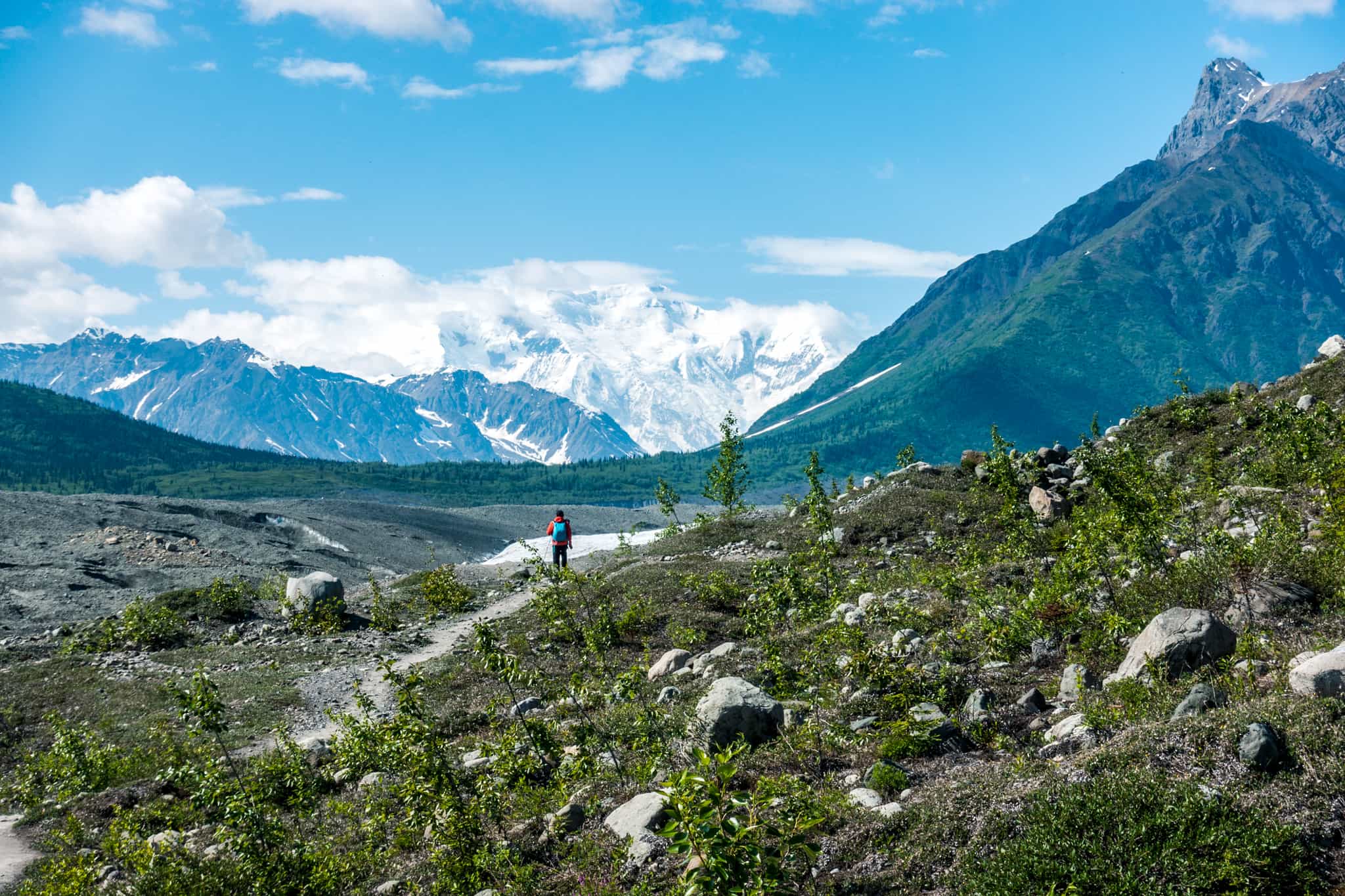
The Ultimate Adventure in Alaska
There is nowhere quite like the great expanse of Alaska – head into the wild for an epic journey around America's last frontier
What's Included?
Activities & Certified Guides
All itinerary activities with expert, local, English-speaking guidesAll accommodation
1 night in a hotel, 7 nights camping, 1 night in a roadhouse lodgeMeals
7 breakfasts, 6 lunches, 5 dinnersTransfers
Airport transfers and everything in betweenEquipment & Permits
All kayaking and canoeing equipment, twin share tents, sleeping mats and national park entry feesSmall Like-minded Groups
Solo-friendly by design, join our small n’ sociable groups of up to 12 like-minded, active and outdoorsy people…
…
What's it like?

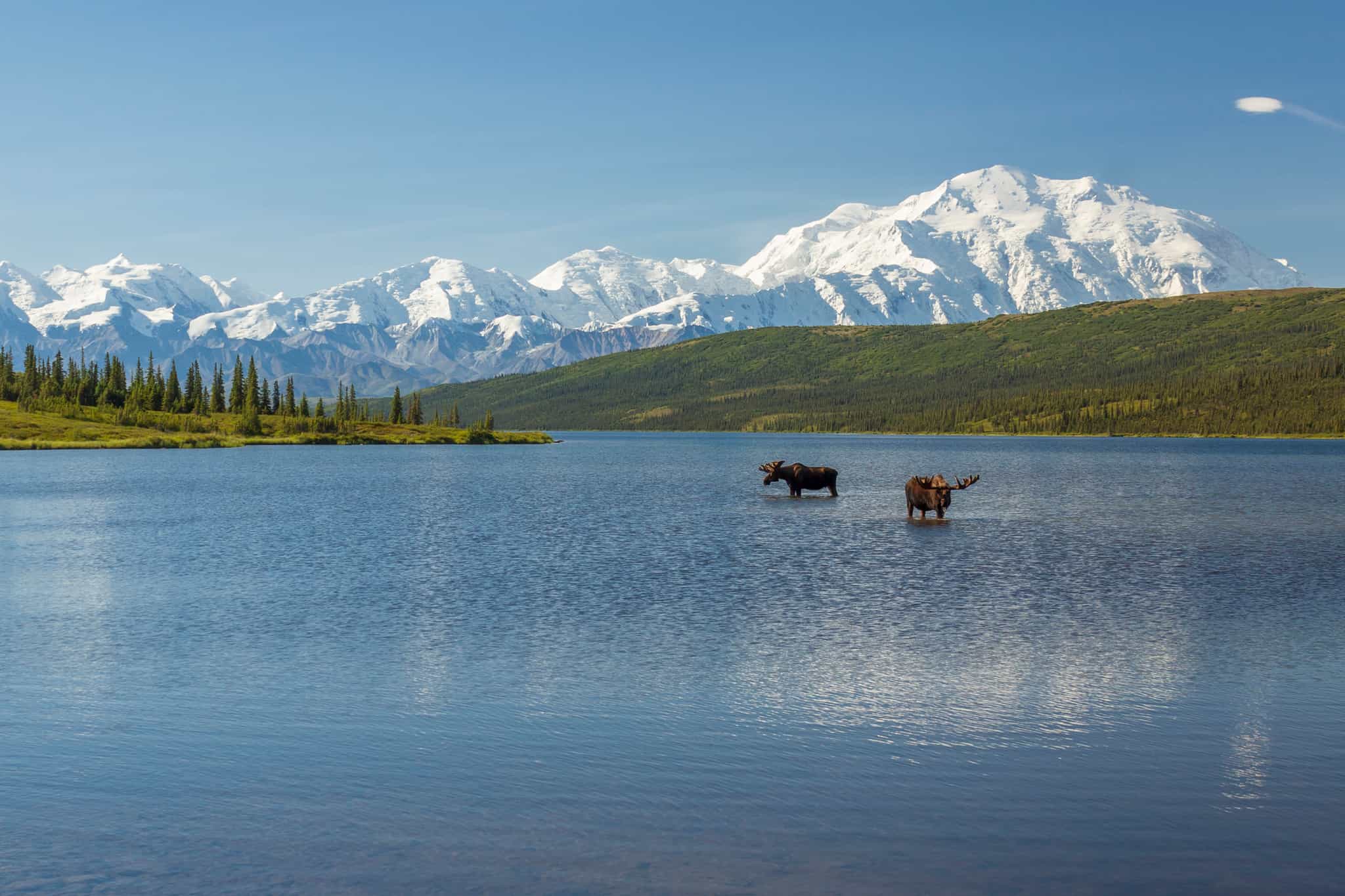
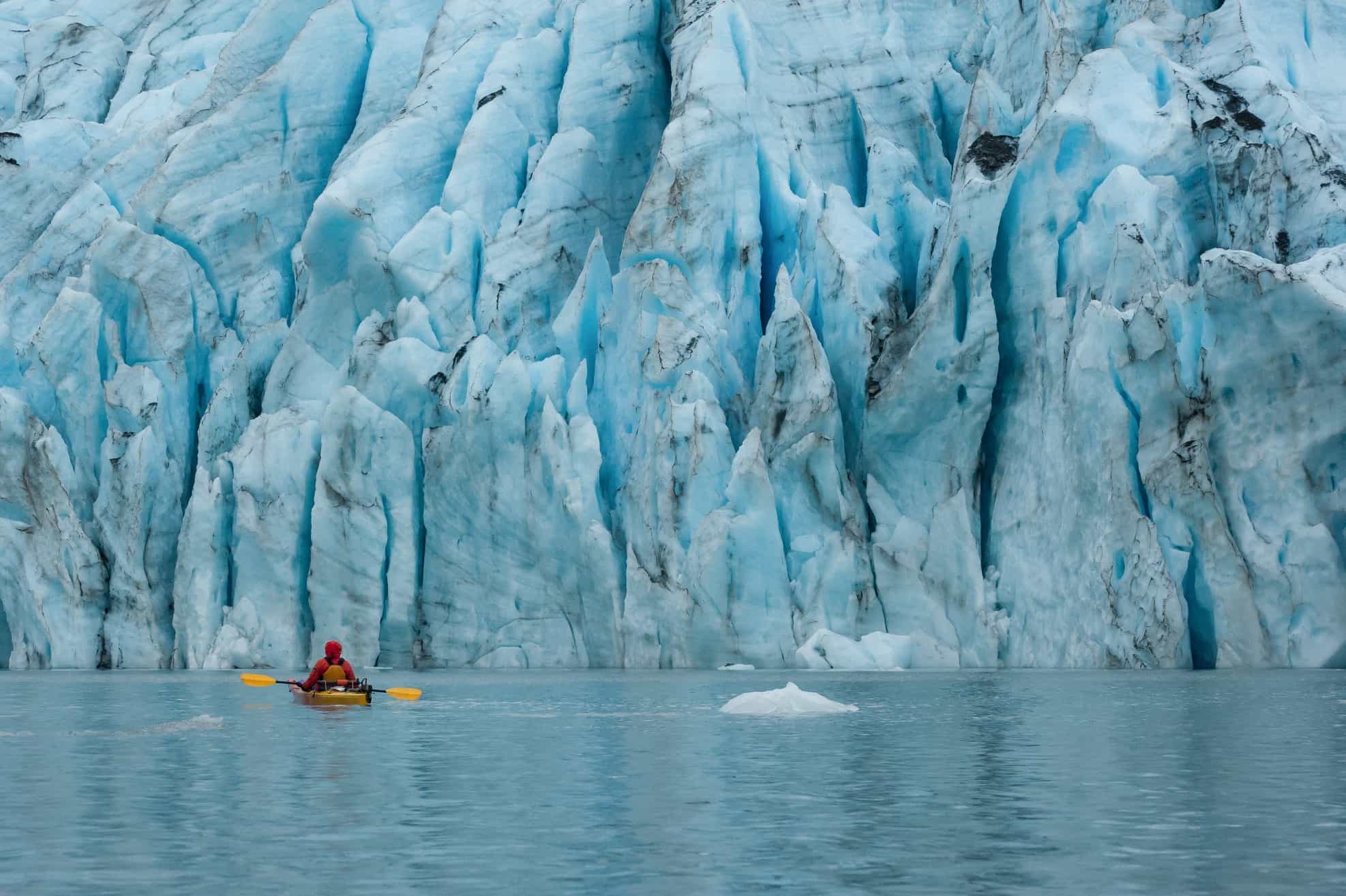
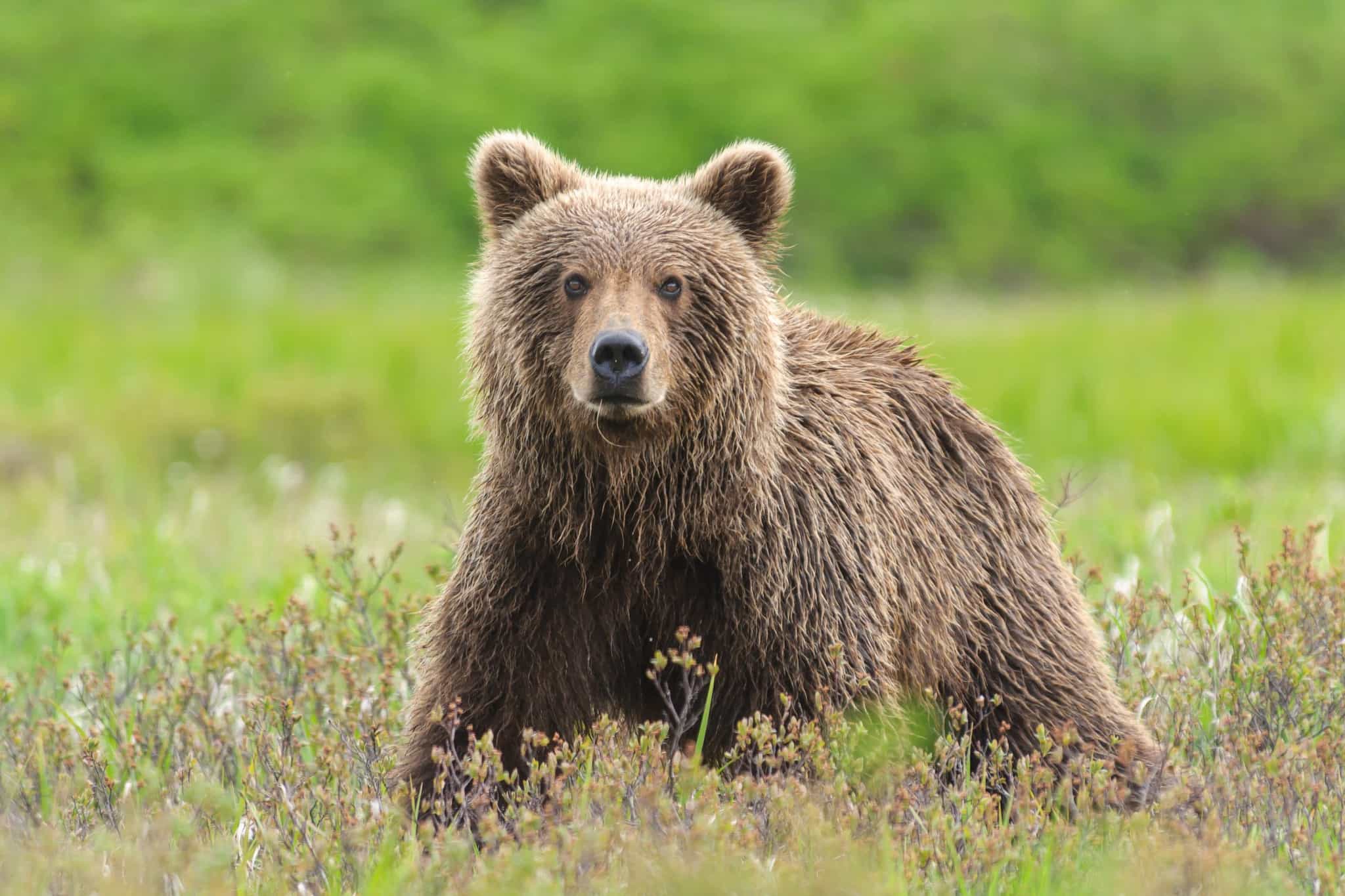
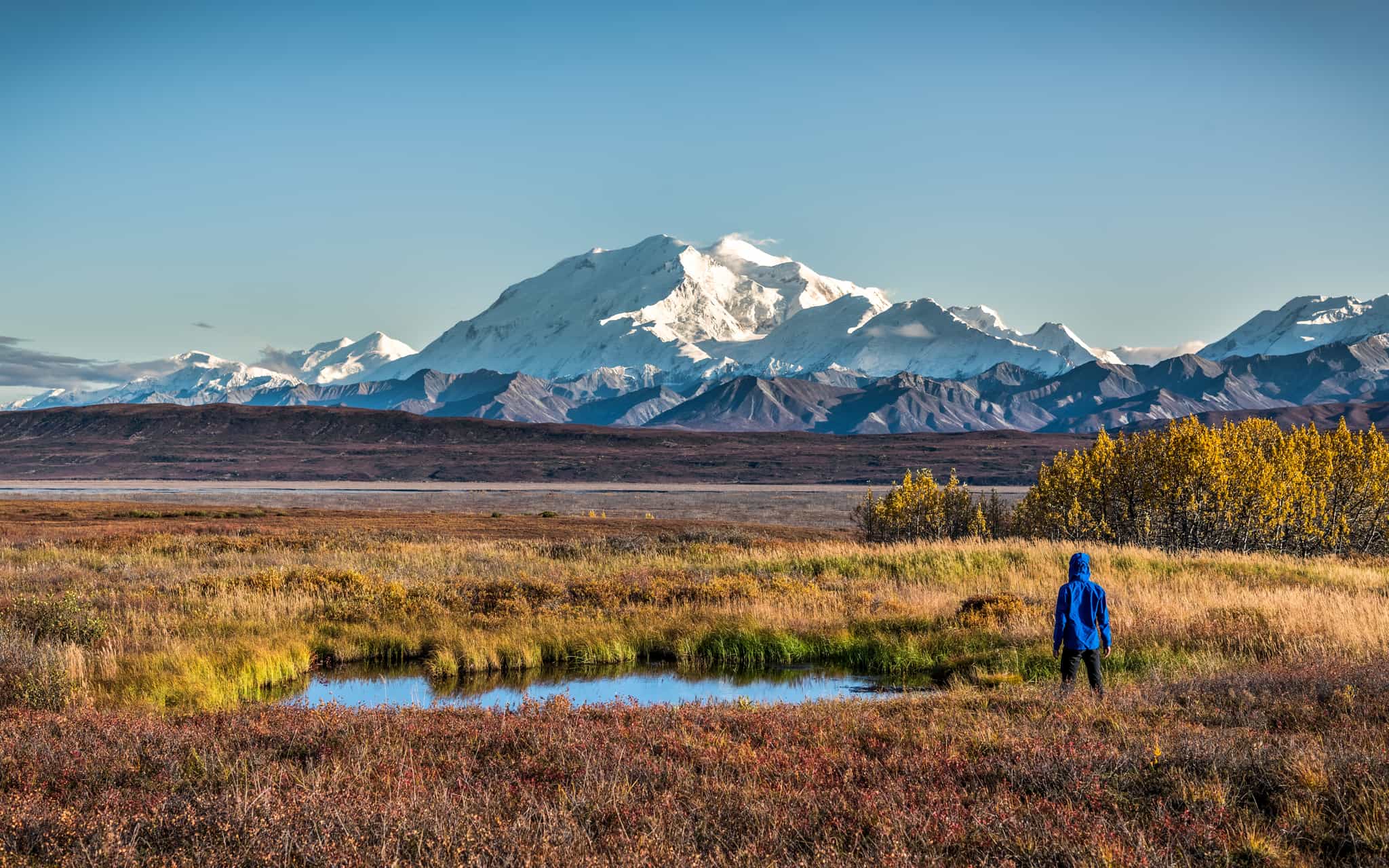
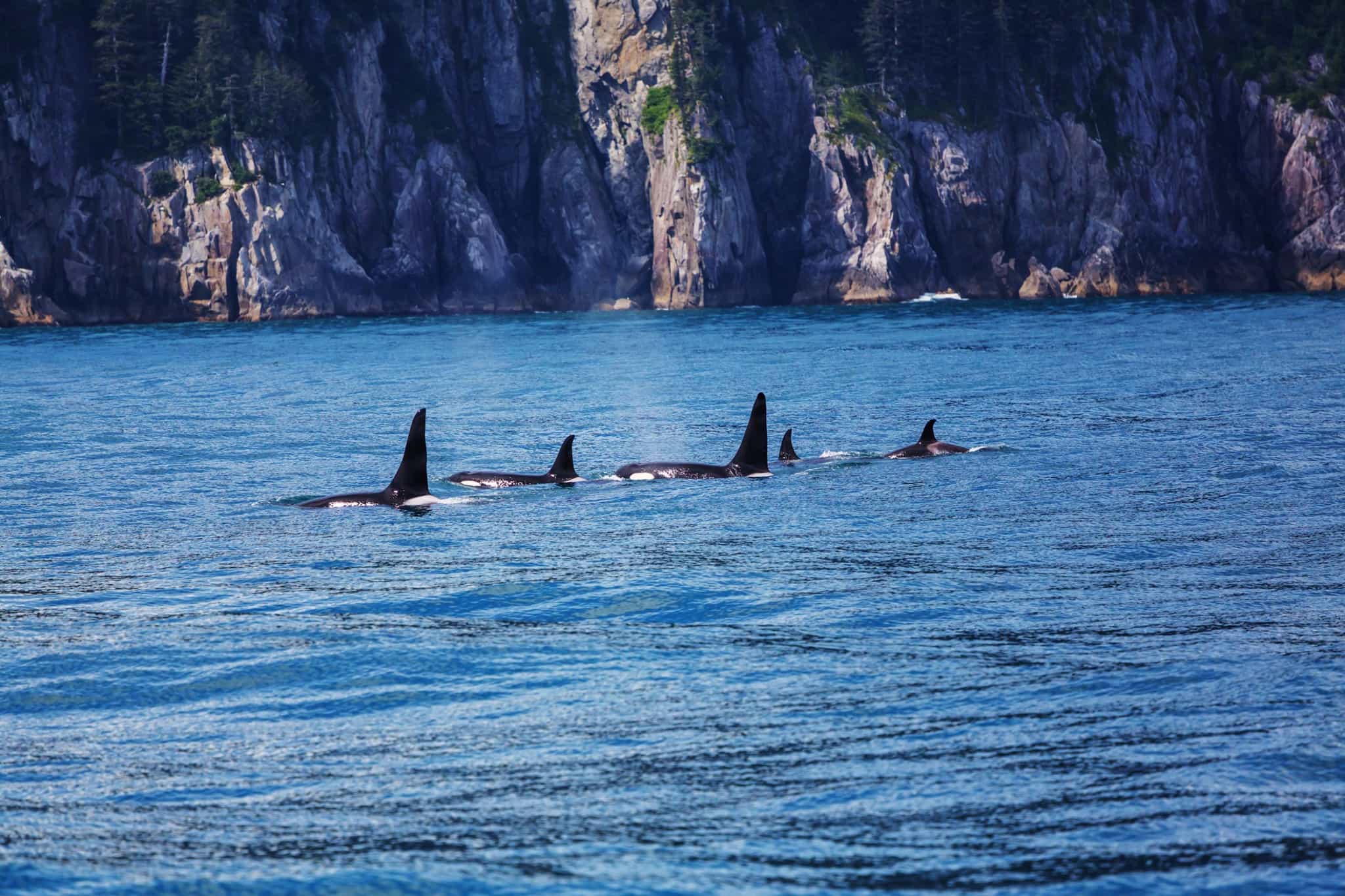
Journey into Denali National Park, eyes peeled for grizzly bears, moose and caribou, beneath the towering backdrop of North America's highest mountain
Kayak along Alaska's spectacular, wildlife-packed coastline to get up close to crackling glaciers and tumbling waterfalls
Ride an exhilarating jetboat up the Maclaren River to reach a remote camp, sleeping out deep in Alaskan backcountry
Settle in for quintessential road trips from mountains to coast, watching America's jaw-droppingly beautiful 49th state go by
Key Information
Day 1
Welcome to Alaska
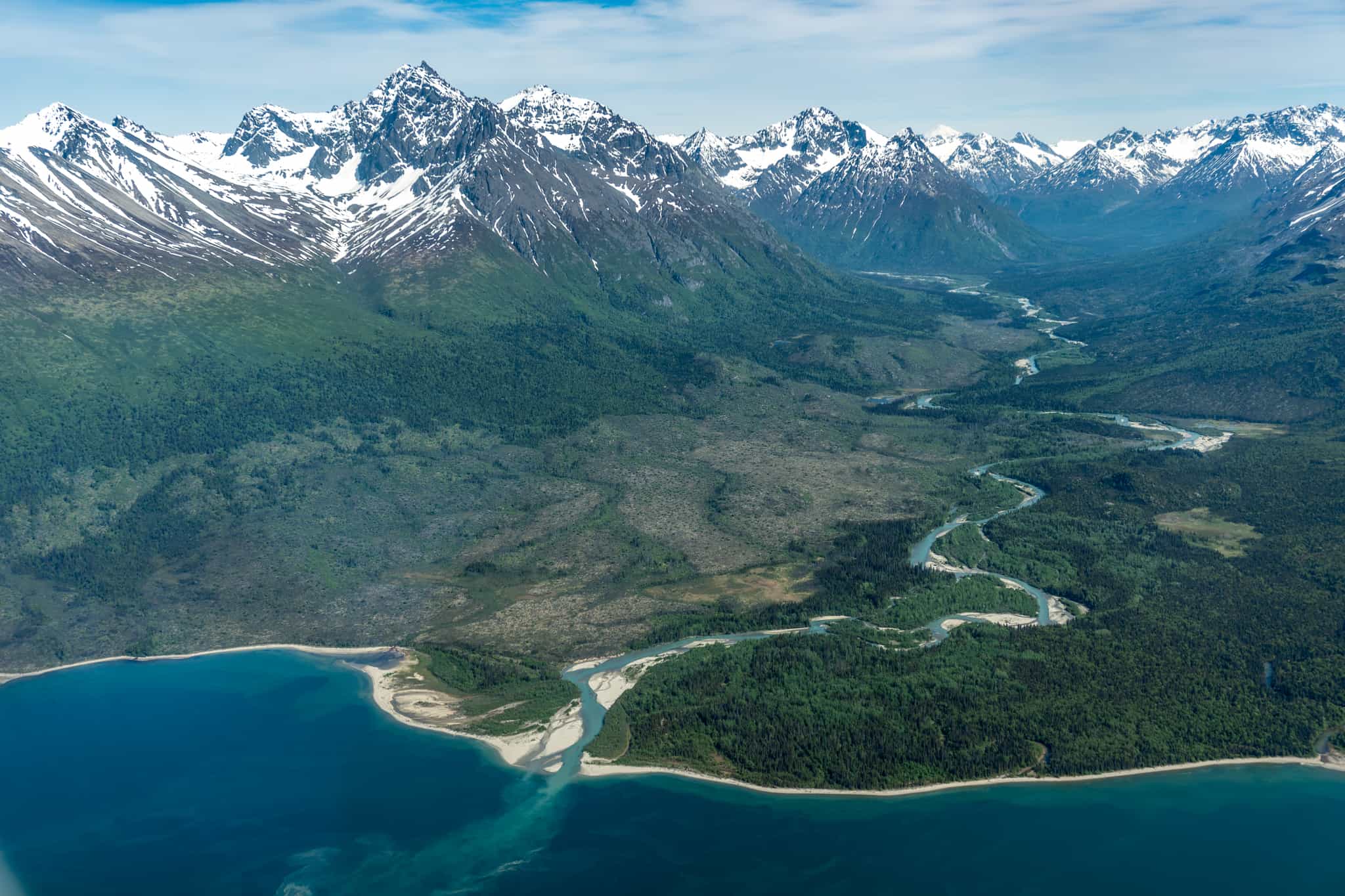
Get your first glimpses of Alaska as you fly north – you may spot the great national parks of Katmai and Lake Clark out the left-hand window, or the Chugach Mountains out of the right. The sense of a true adventure beginning is palpable as you descend into Alaska, ready for a once-in-a-lifetime trip that will evoke all the great American wilderness stories – from John Muir to Jack London. Muir wrote, "you should never go to Alaska as a young man, because you'll never be satisfied with any other place as long as you live". Over the next 10 days, you'll see what he meant. Anchorage is your gateway to the 49th state: your host will meet you at the airport and transfer you to your hotel for the night, before you set off into the wild first thing tomorrow.
Day 2
Road trip to Denali
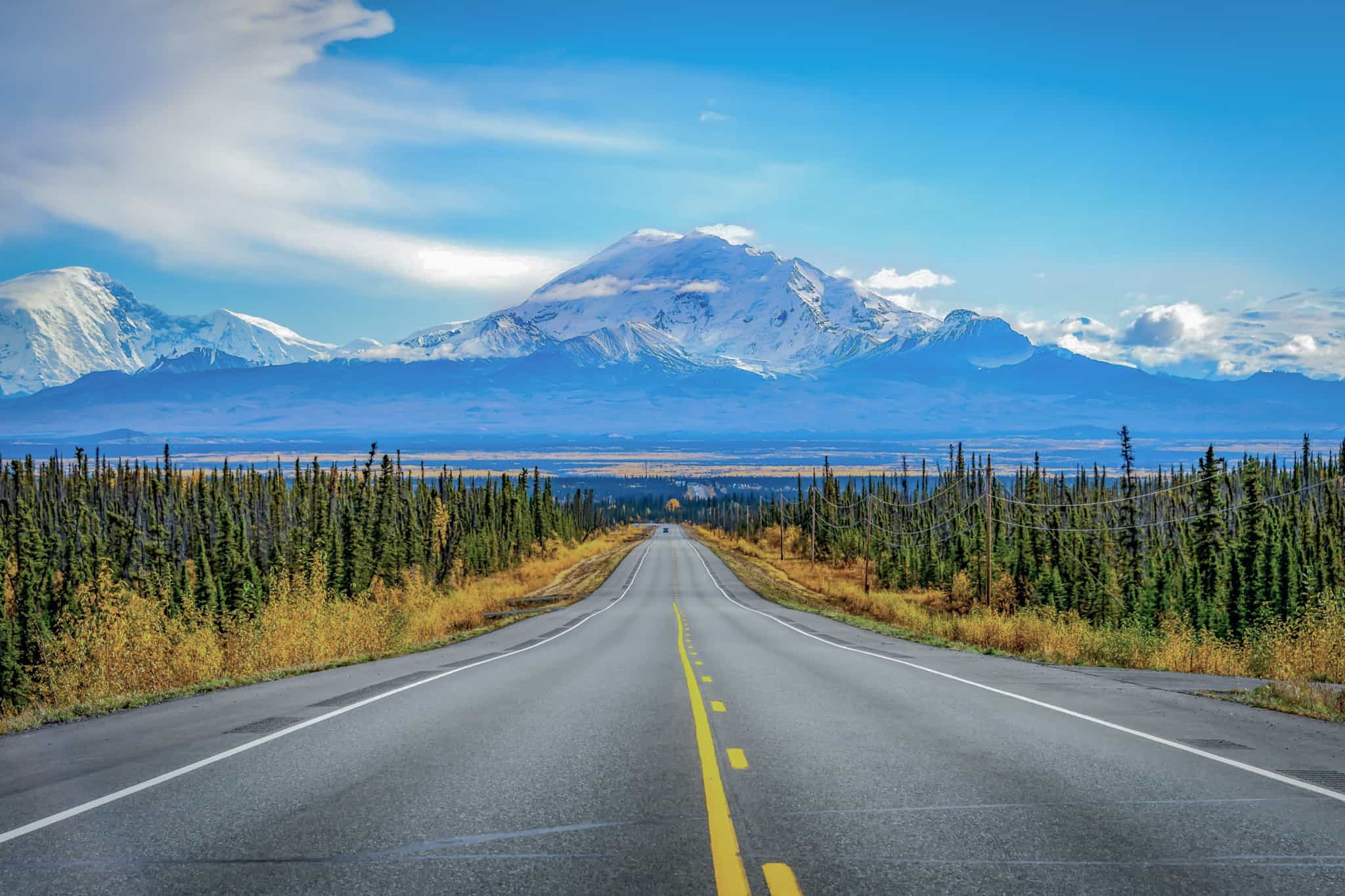
Hiking
Driving
Roll out of Anchorage this morning and hit the open road into the great expanse of Alaska's interior. Heading north, keep your eyes peeled for a glimpse of North America's tallest mountain – Mount Denali – as you reach the small community of Talkeetna. Gold miners and fur trappers have been replaced by artists and adventurers in this part of Alaska, while the world's best mountaineers plan their ascents up Denali from here, too. Take a look around the town, which looks like a film set for an old Western movie, before heading off for a short hike along the Talkeetna Lake loop. Continue north to your campground outside Denali National Park, pitch the tents and enjoy your first campsite dinner as you settle into the adventure.
Day 3
Denali National Park
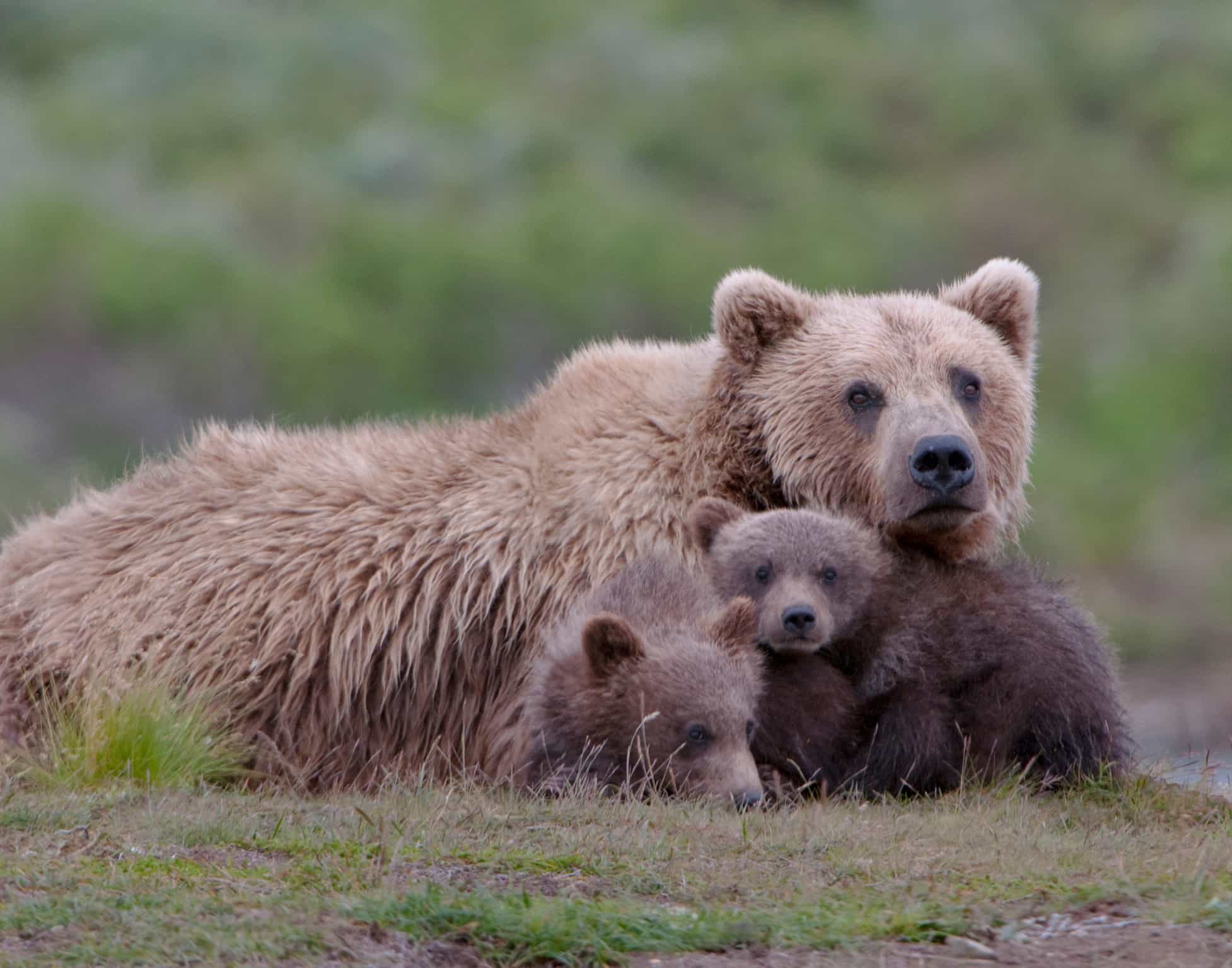
Wildlife Tracking
Hiking
Denali National Park is different to America's other national parks for many reasons: one being that there is a single road in and out of the park, which keeps the six million acres of land truly wild. Denali's animals run the place, while human visitation is tightly managed by a network of iconic green National Park buses. These will shuttle you into the vast wilderness in search of grizzly bears, black bears, wolves, caribou, moose, and Dall's sheep. You can hop on and off the bus at various points to stretch your legs and soak up the Denali air. As well as being constantly on the lookout for Alaskan wildlife, if the conditions are clear you'll also get fantastic views of Mount Denali. Back at the park entrance after around four to five hours, you can head out for a hike on a 'front-country' trail to take in the Denali scenery on foot. Recount your tales of epic Alaskan wildlife sightings at a local restaurant tonight.
Day 4
Hike the Triple Lakes Trail & take a jetboat to wilderness camp
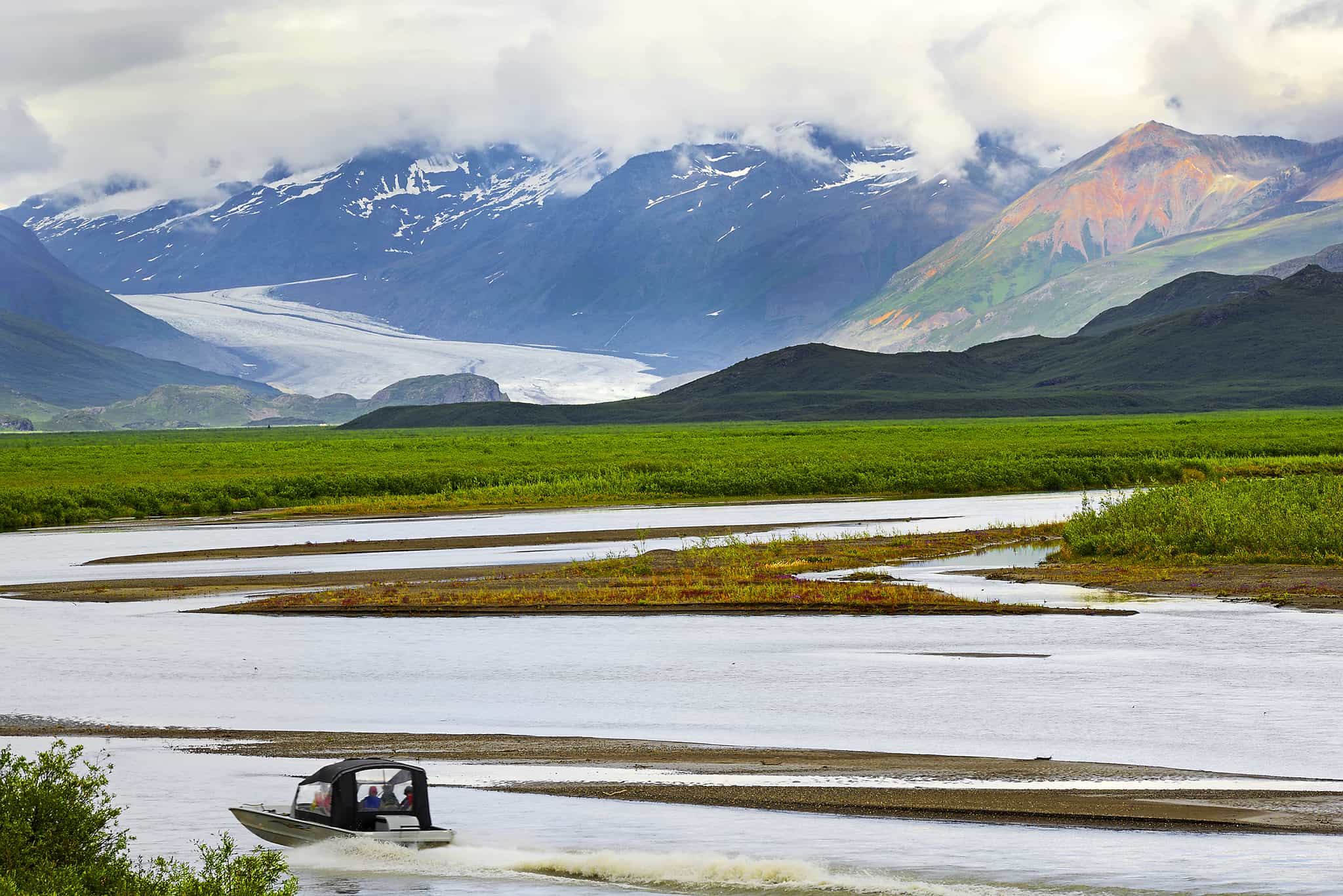
Hiking
Driving
Kick off the morning with a hike along the Triple Lakes Trail, witnessing more of the Denali ecosystem on display with chances to spot moose and beavers. Hit the road later to travel along the unpaved Denali Highway, crossing open tundra with the epic Alaska range coming into view as you bid farewell to Mount Denali. Reaching the Maclaren River, you'll board a jetboat to be whooshed up the river on an exhilarating journey deeper into the wilderness, surrounded by peaks. Eventually, you'll reach a remote wilderness camp just off the river where you'll settle in for the night. A long, long way from anywhere, it's the perfect spot for telling tales around the campfire beneath the Alaskan summer twilight (if you're travelling in June and early July, you'll even encounter the midnight sun).
Day 5
Journey to Valdez
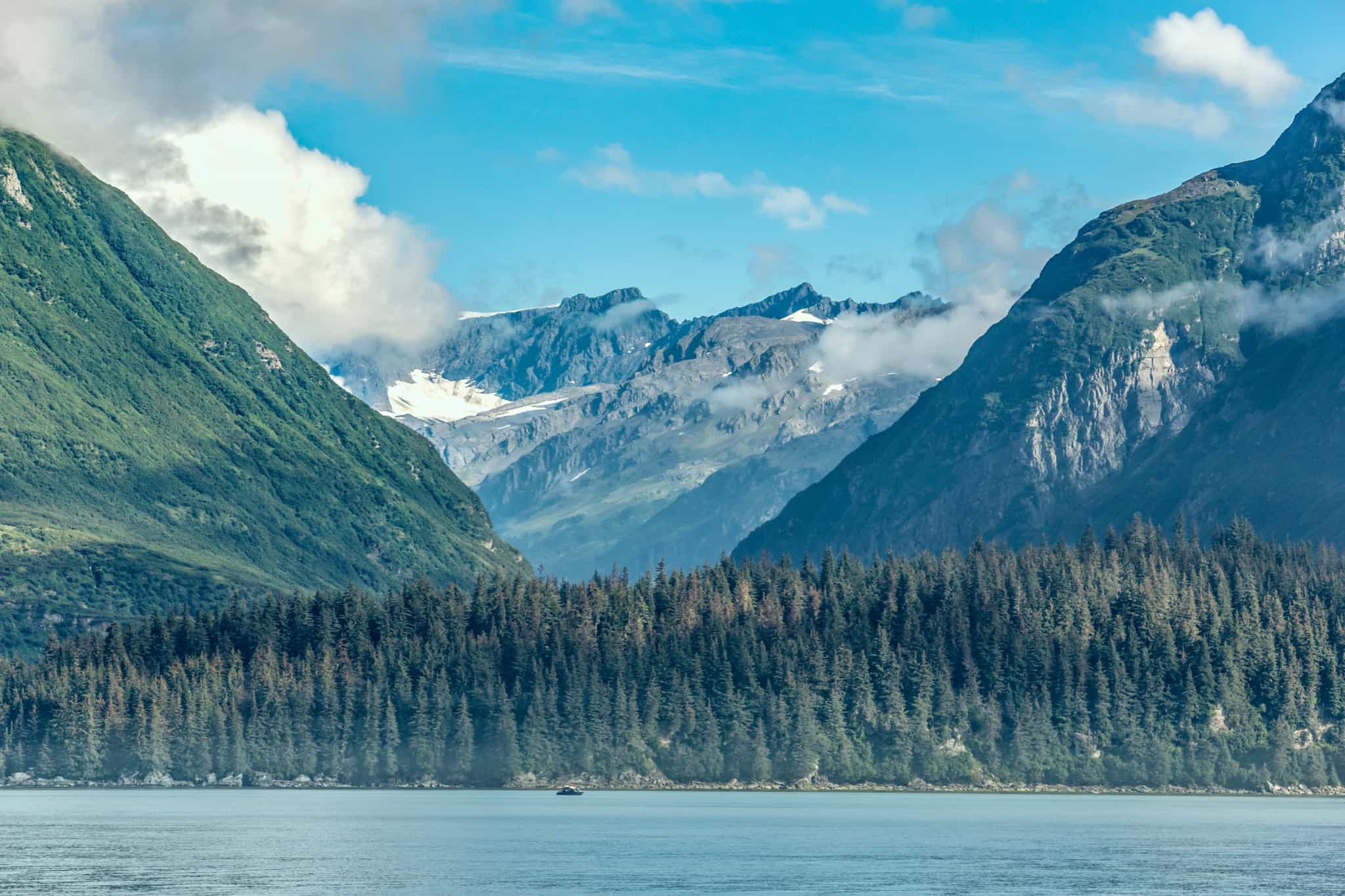
Driving
Canoeing
Wake up in the Alaskan backcountry, take in the surroundings and tuck into breakfast at camp before hitting the water again – this time in a canoe to paddle your way back to the Maclaren River Lodge, at a slower pace than the jetboat yesterday. Back on the road, you'll journey to Alaska's coast, taking in the relentlessly stunning scenery as you cross the alpine tundra of Thompson Pass in the Chugach Mountains, stopping to explore the Worthington Glacier. The final leg of the road trip leads you in to Valdez, a beautiful location which holds a dark past and an inspiring story of Earth's capacity for recovery (see FAQs for details).
*Please note: while canoes will be available for the return journey on most departures of this trip, due to the remote nature of the wilderness camp, this can't be guaranteed. In the event that canoes are not available, you'll take the jetboat in both directions.
Day 6
Kayak the Alaskan coastline
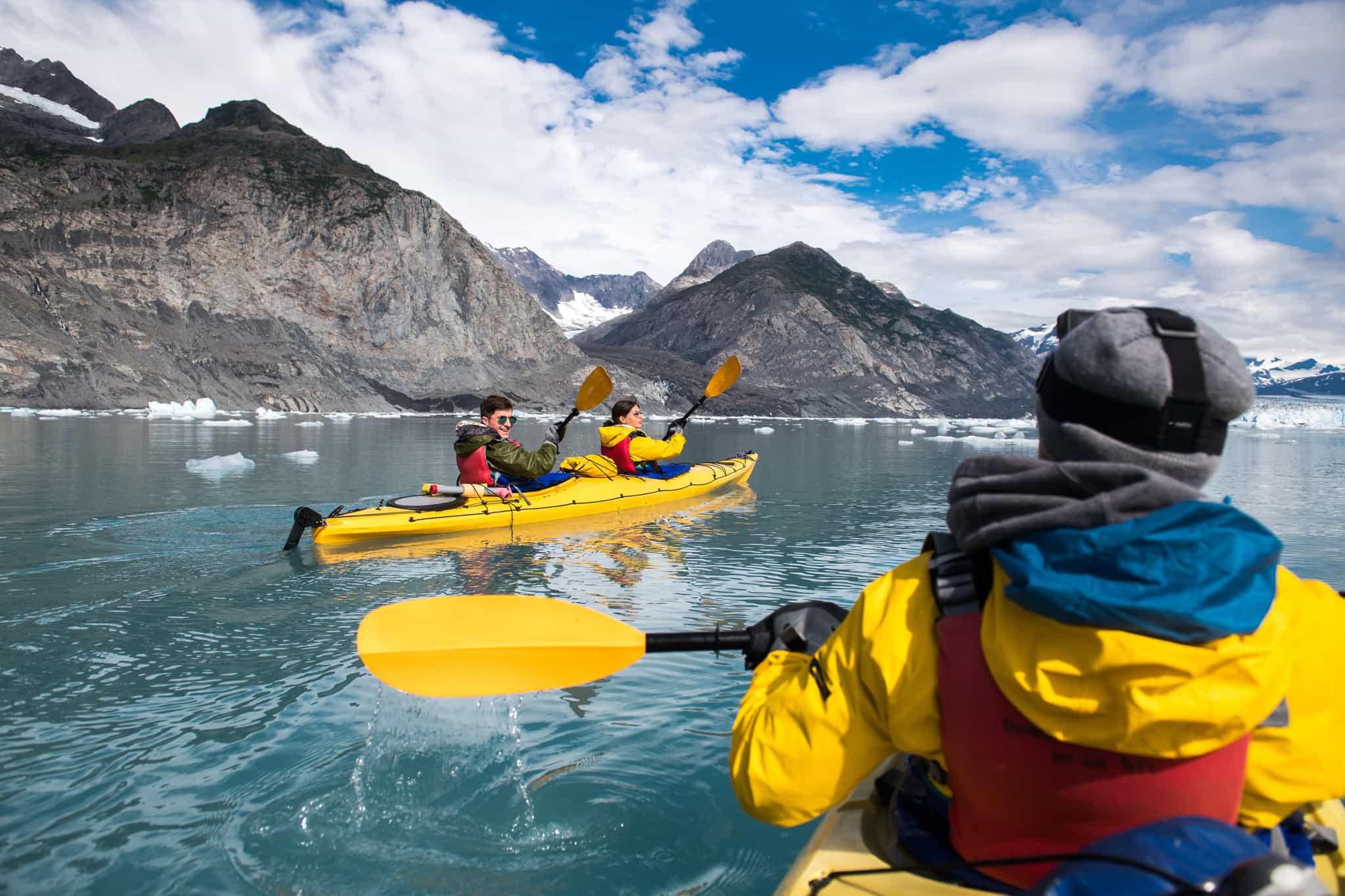
Kayaking
Head down to the harbour to get kitted out for cold-water kayaking by an expert team of guides, who know the waters in this part of Alaska like the back of their hand. Hop in a boat heading out of the harbour and along the coast, passing densely tree-lined mountains on your right-hand side as you sluice through the emerald waters. Glimpse the spectacular Anderson Falls ahead, before turning into Shoup Bay and getting your first sight of its stunning glacier. Hop out of the boat on a beach to switch into kayaks, then push into the bay for the most surreal paddle of your life. Getting closer to the glacier you'll likely hear it rumble and crackle as it calves – an incredible natural phenomenon. Paddle up to a stunningly situated beach for a picnic lunch before getting back on the water, paddling out of the bay to explore the coast of the Prince William Sound. Marine life is abundant in this whole area and you'll be sure to spot seals, sea lions, sea otters and – if you are very lucky – orcas. Eventually, you'll meet the boat again, load up the kayaks and head back to Valdez. Tuck into dinner at camp and maybe a beer in town, to toast an unforgettable day.
Day 7
America's biggest National Park
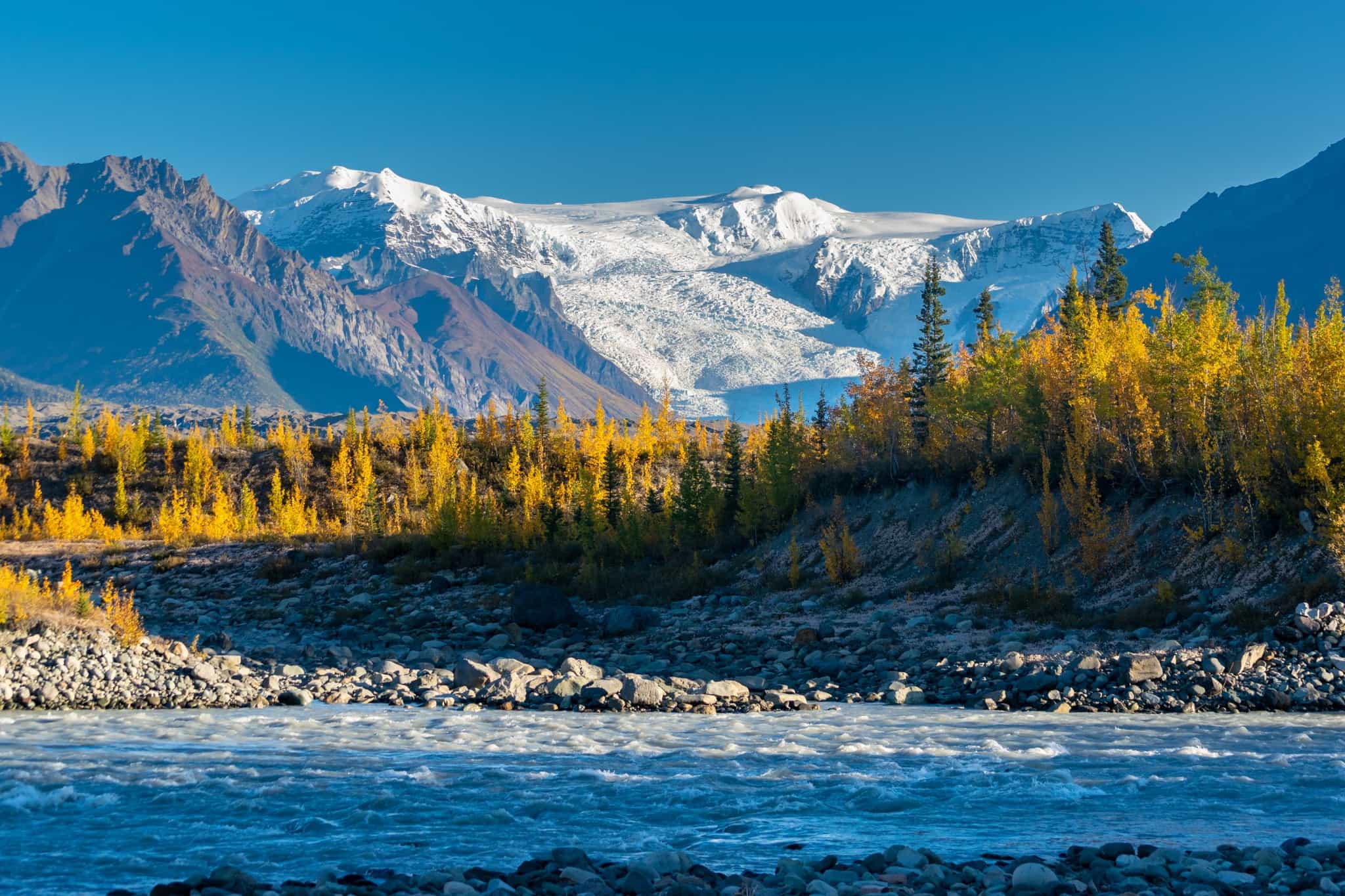
Hiking
Driving
Wave goodbye to Alaska's coast as you head back inland along the McCarthy Road, a rugged 60-mile unpaved route. There will be various opportunities to stop and punctuate the journey with short hikes. This route allows you to delve into the history of Wrangell–St. Elias; the largest National Park in the United States. Back in the early 20th century, McCarthy thrived as a bustling town, serving as a place where copper miners from the Kennecott Mines sought leisure activities not permitted in Kennecott itself. After the mine closed in 1938, the town was nearly abandoned. As you travel, you'll come across historic structures that have retained much of their original charm from that era, with only a few permanent residents still living there. You'll set up base for the next few days at a campground near the river with views of the Kennecott Glacier. Stretch your legs with a short hike to the river and across the bridge to explore McCarthy.
Day 8
Hike the Root Glacier Trail
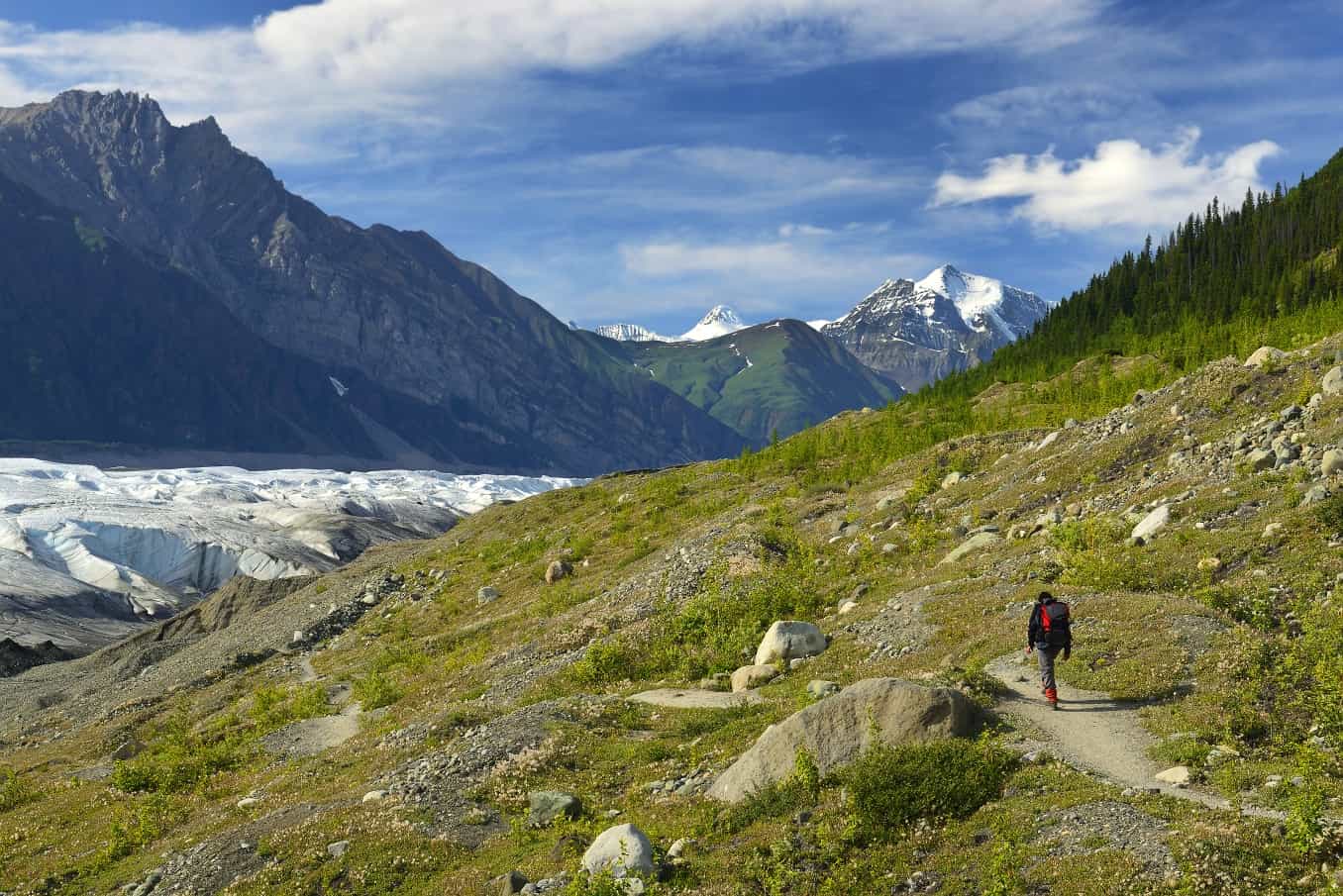
Hiking
Wrangell St Elias is as an adventurer's playground, with its rugged landscape of massive mountains, seemingly endless glaciers, powerful rivers and expansive forests spanning an area that ranges from sea level to 5500m in elevation. The park itself is larger than Switzerland, has the largest concentration of 'fourteeners' (mountains over 14,000 feet) in North America and is home to the largest glacier system in the US. The 4996m Mount Blackburn looms in the background as you explore the area this morning, hiking along the Root Glacier Trail towards the edge of the glacier. After the hike you can enjoy some downtime just soaking up camp or adventuring further: there are so many things to do here and optional activities are a common occurrence for adventurers visiting McCarthy. You can join a guided hike onto the Root Glacier itself to see glacial waterfalls, canyons of ice and magnificent blue pools or a guided walk around the abandoned copper mining town of Kennecott, hearing legends of the tenacious people that lived and worked here. Or maybe the ultimate splurge: take a flight on a classic Alaskan wilderness plane to see Wrangell St Elias's majesty from the air. Your guide will be able to advise on and help arrange any extra activities you'll like to opt for during your time in this part of Alaska.
Day 9
Wrangell hikes and journey along the Copper River
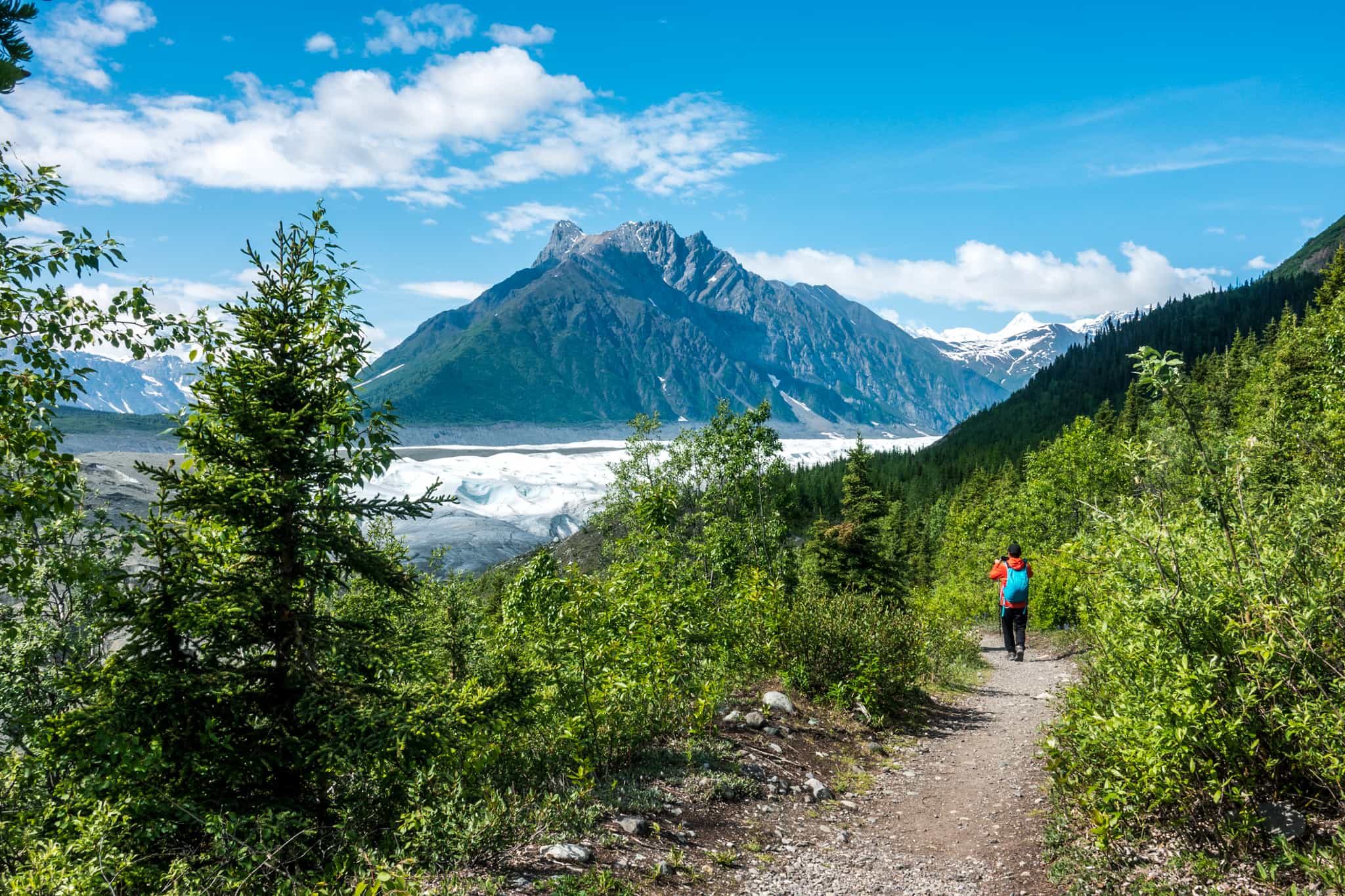
Hiking
Driving
Enjoy breakfast and coffee at camp, taking in the surroundings one last time before heading off into the wilderness with a hike along the West Kennecott Glacier Trail. Passing through a beautiful forest, you'll reach an epic view over the glacier and have the chance to spot bears hanging out on the lateral moraine below you. Afterwards, you'll pack down camp and hit the road again, making a few pit stops along the Copper River. The red salmon here are top-notch and highly coveted in North America, leading to disputes among commercial fisheries, the State of Alaska, and the Ahtna people who've lived a subsistence lifestyle on the land here for over 5,000 years. The fish wheels along the Copper River tell tales of Russian fur trappers and other outsiders who flocked to this region to exploit its resources. As today's journey unfolds, you'll dig deeper into the history of the Indigenous peoples integral to Alaska and the entire continent.
Day 10
Final road trip back to Anchorage
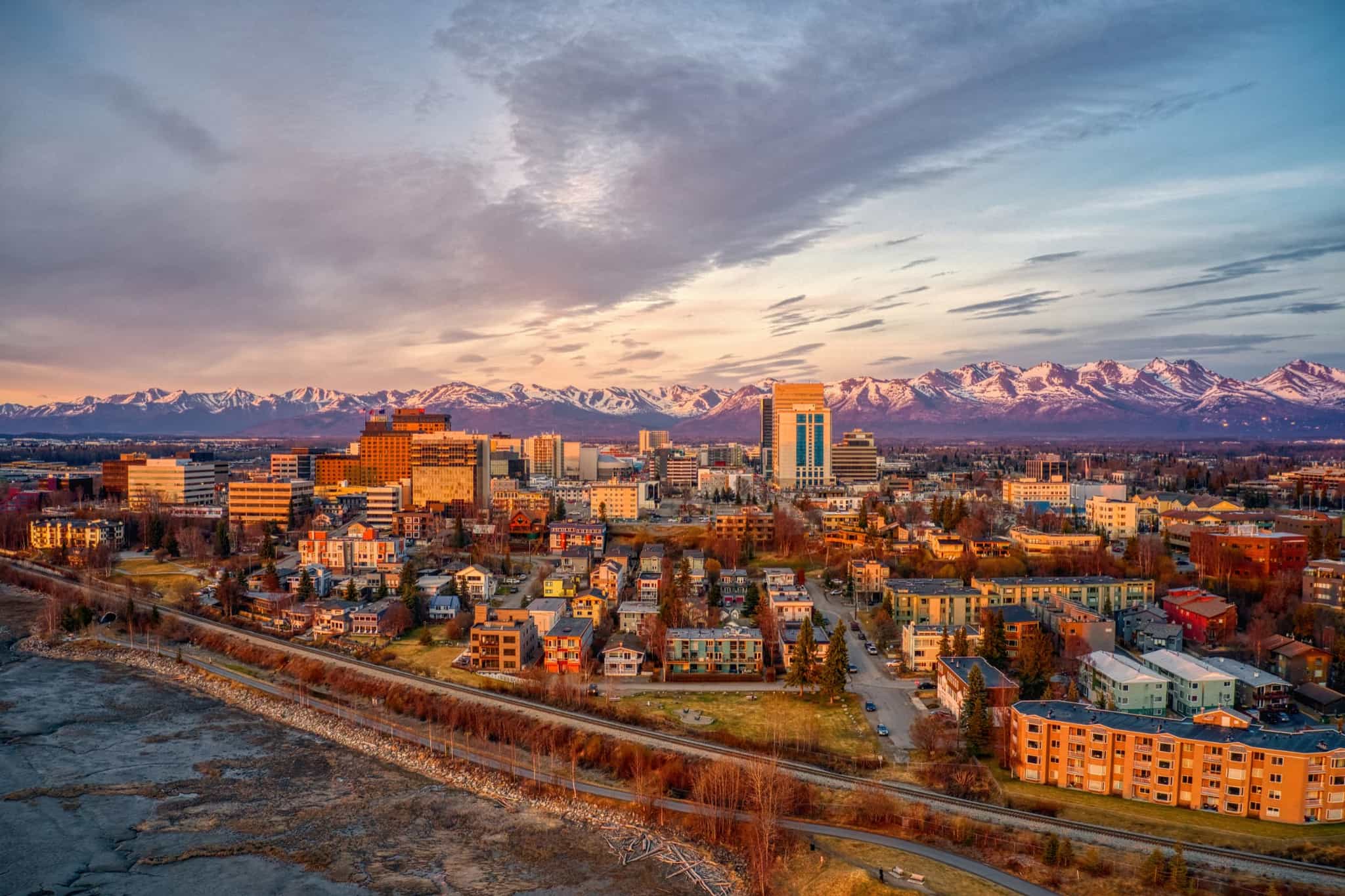
Driving
Settle in for one last drive with spectacular views across the Matanuska Valley and along the Chugach Mountain Range today, before arriving back in Anchorage to say farewell.
The Area
Logistics
Starts
Anchorage Airport
20:00 on Day 1
Ends
Anchorage Airport
13:00 on Day 10
Transfers
Your host will meet you at Anchorage Airport at 20:00 on Day 1 to transfer you to your hotel. If you are arriving earlier or later than the group transfer at 20:00, the hotel offers a complimentary airport shuttle service.
On Day 10, you'll depart Glennallen at 09:00, arriving at Anchorage Airport at approximately 15:00. We recommend you book a flight that departs no earlier than 17:00.
Travel options
There are various flight options into Anchorage: regular departures from Seattle and Vancouver connect well to long-haul flights to and from major European hubs. Sadly, there is no rail connection to reach Alaska through Canada, though you can road trip your way there along the Pan-American Highway. If you have time on your hands and fancy taking a scenic route to the start of the trip, it is possible to reach Valdez by ferry from Bellingham in Washington State, north of Seattle.
Day 1
Breakfast
Lunch
Dinner
Day 2
Breakfast
Lunch
Dinner
Day 3
Breakfast
Lunch
Dinner
Day 4
Breakfast
Lunch
Dinner
Day 5 – Day 7
Breakfast
Lunch
Dinner
Day 8
Breakfast
Lunch
Dinner
Day 9
Breakfast
Lunch
Dinner
Day 10
Breakfast
Lunch
Dinner
What is the food like?
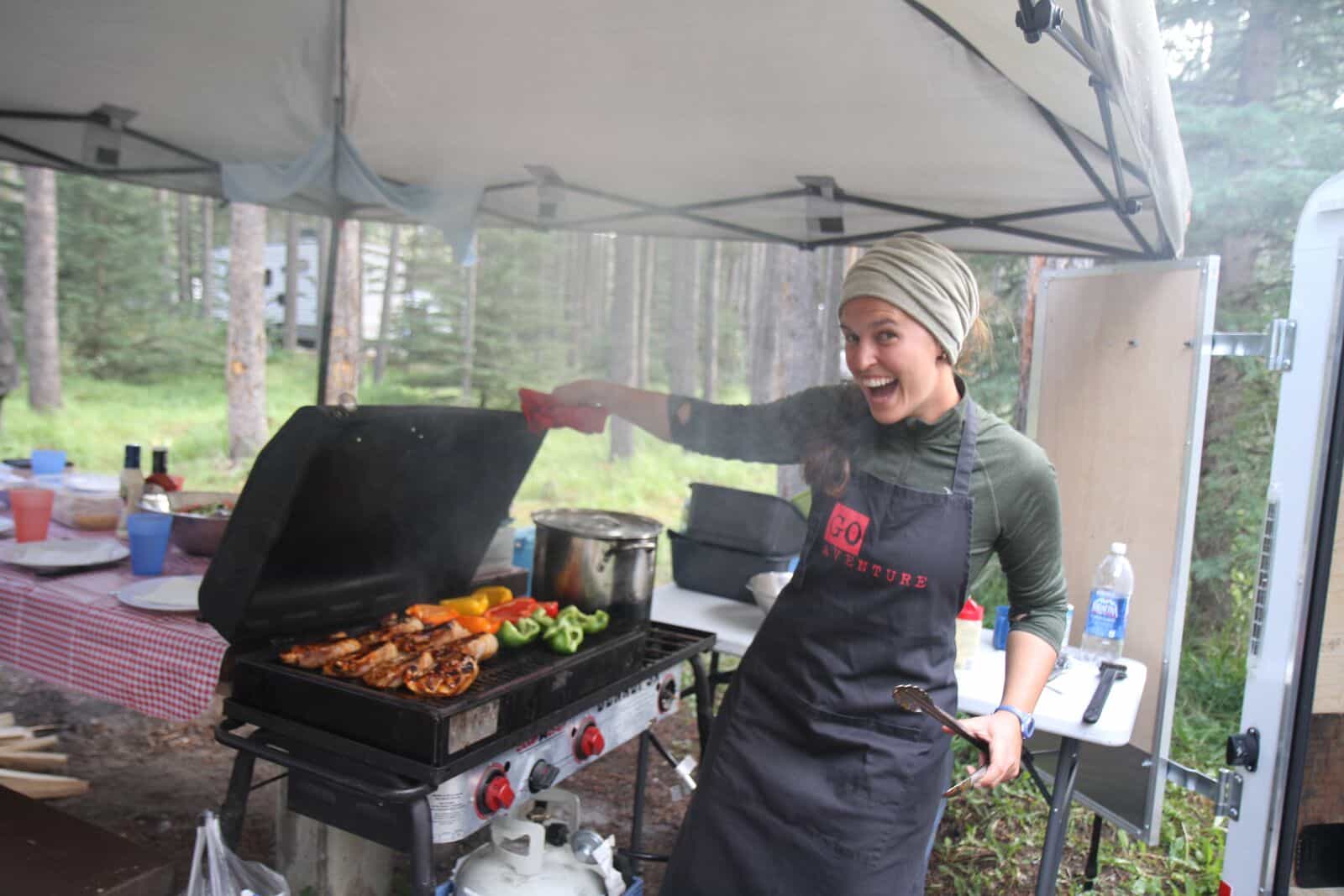
Whilst camping, your guide will rustle up nutritious and varied meals. As it is participatory camping, your help washing up afterwards will be appreciated by the guide! Breakfasts are served buffet-style each day with a variety of items, allowing for a quick start before getting out on the trails. These typically include hot drinks, fruit juice, bread, croissants, cereal, granola, yoghurt and fruit. Lunches will be cold picnics, prepared earlier so that you can carry them with you and stop somewhere during the hikes. These usually involve wraps, sandwiches, salads, cereal bars and fruit. For dinners, the guide will plan a starter, main and dessert. The main dish is typically meat or fish with sides of rice or potatoes and vegetables. Some nights they may make a pasta or curry dish. Where dinners are not included, your guide will recommend good restaurants nearby. You should budget $20-25 per dinner for these, excluding alcoholic drinks and tips.
Vegetarian diets can be catered for, please request this in advance on your passenger info form once you've made your booking. Lactose-free, Nut-free and mild Gluten-free diets can also be accommodated by advance request. However, due to the limited cooking facilities in the camp kitchen, 100% strictly Vegan or Coeliac diets (requiring separate cooking equipment to prevent cross-contamination) cannot be accommodated on this trip.
What is the accommodation like?
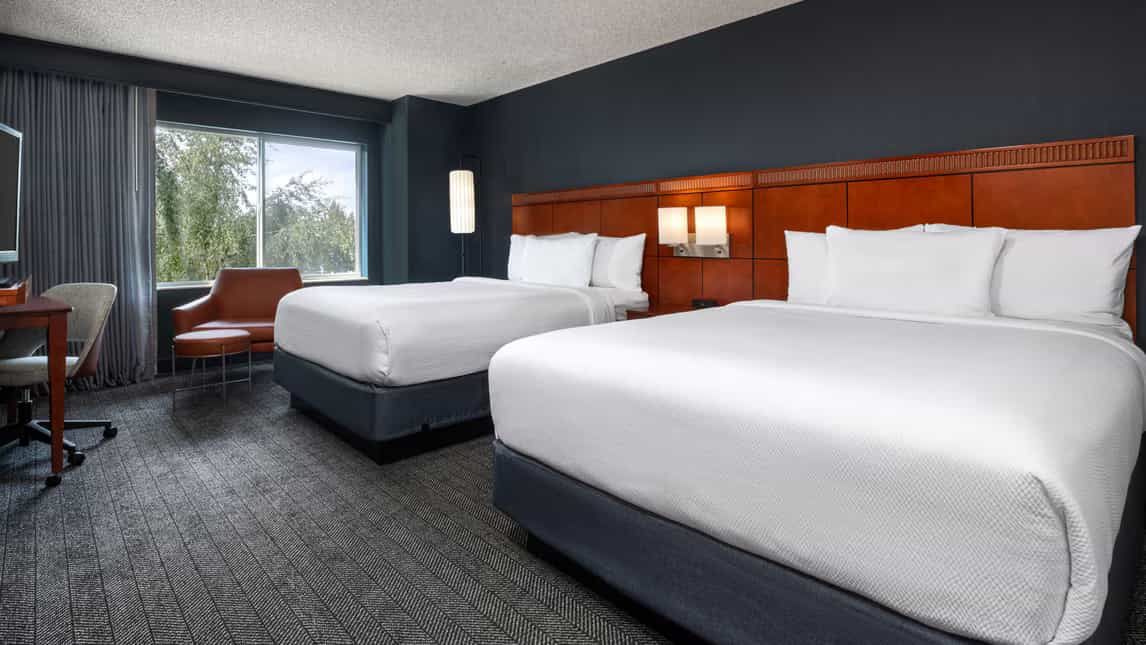
Anchorage
Your arrival night in Alaska is spent at the Courtyard Anchorage Airport Hotel. You'll stay in twin-share rooms with ensuite bathrooms. The hotel offers a pool, fitness centre & complimentary airport shuttle.
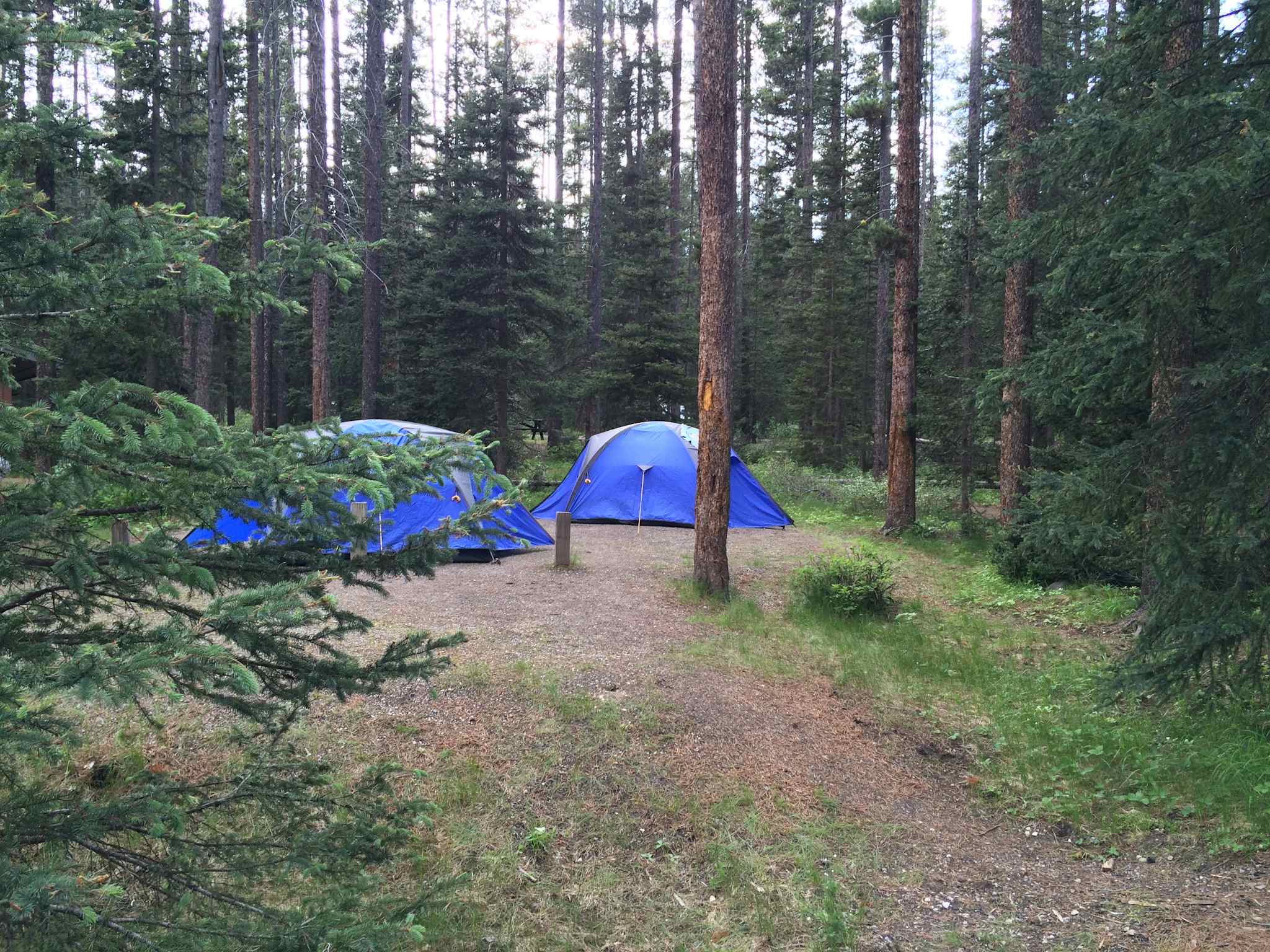
Campsites
Throughout the trip you'll stay in organised, permanent, 'front-country' campgrounds with ample facilities such as picnic areas, BBQ areas, shower blocks and toilets. The names of the campgrounds are:
Denali: Grizzly Bear Campground
Valdez: KOA Journey Campground
McCarthy: Glacier View Campground
This is participatory camping, so you'll be expected to pitch in and get your own tent set up, although your guide will be on hand to help out! Tents are allocated on a twin-share basis, although you have the option to upgrade to a sole occupancy tent should you wish – see the Optional Extras section.
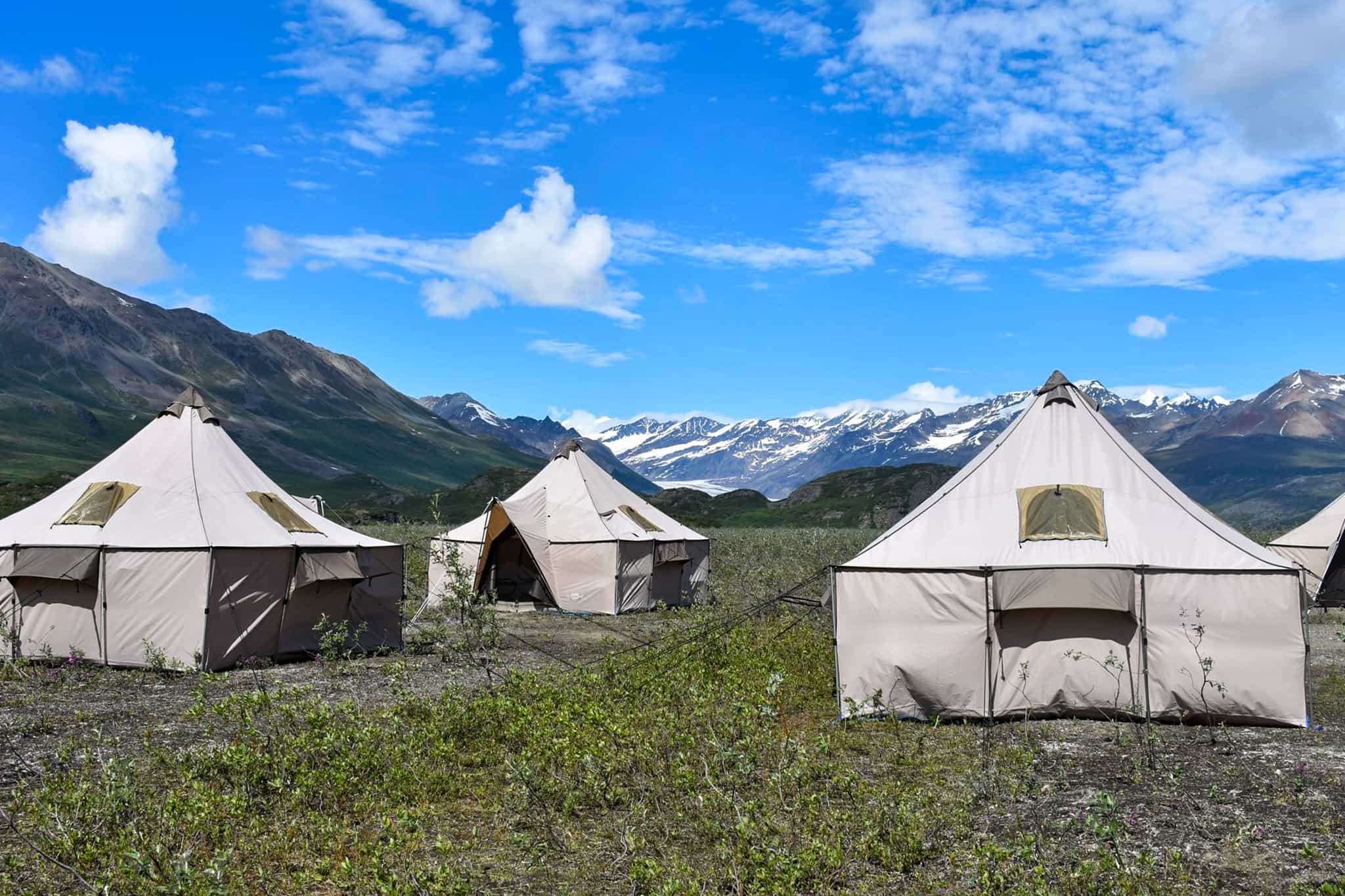
In the Wilderness
A real highlight of the trip is the night you'll spend camping out in the wilderness, far from civilisation on the banks of the Maclaren River. It takes a long journey along the unpaved Denali Highway to get to the put-in spot at a remote lodge, from where you'll be whooshed up the river in a jet boat to reach the remote camp. You'll stay in spacious twin-share tents, with an almost yurt-like feel to them. Camp beds are provided but you'll need to bring your own sleeping bag. There is a campsite toilet tent, which definitely qualifies as a loo-with-a-view given the stunning scenery all around.
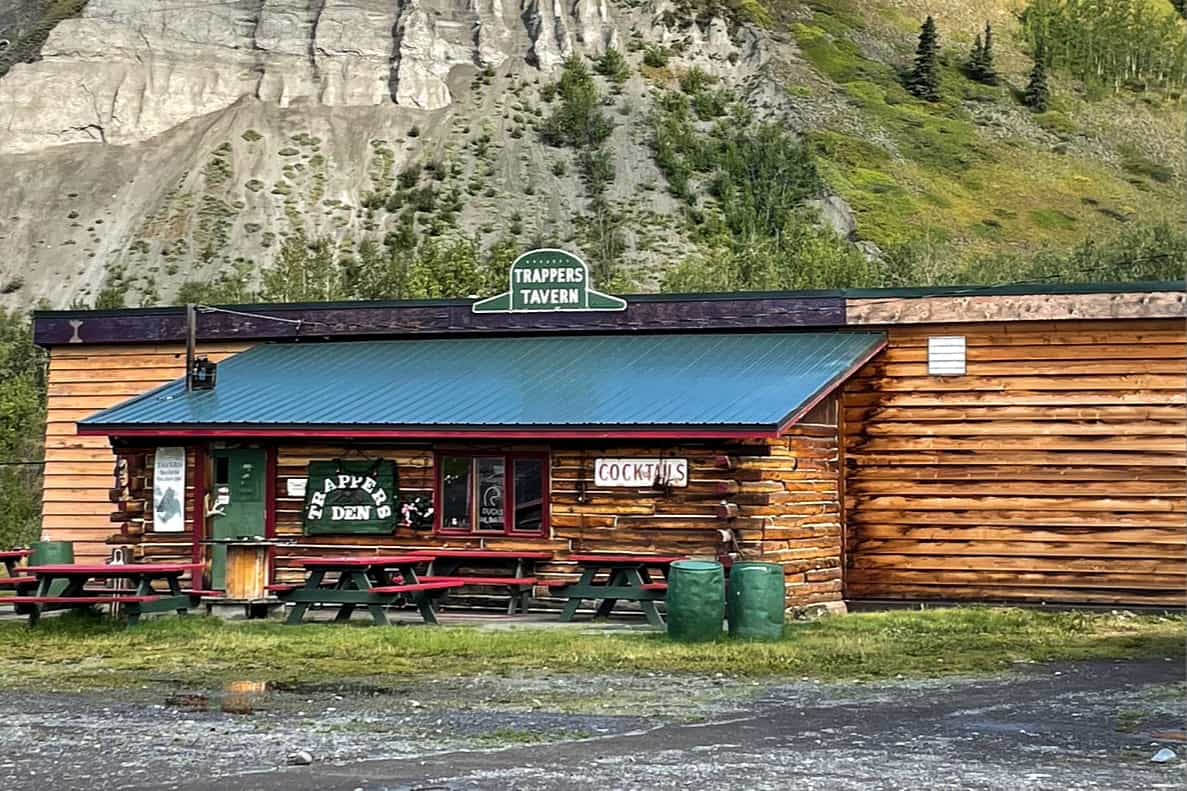
Gakona Lodge
As you road trip your way back from Wrangell St Elias to Anchorage, you'll overnight at a real Alaskan gem. Gakona Lodge is the oldest roadhouse in Alaska, nestled at the confluence of the Copper and Gakona Rivers, providing a snapshot of real old-school Alaskan hospitality. Pull up a seat at the Trappers Bar to sip beers with the locals and marvel at the decades of memorabilia on the walls depicting the good life in Alaska. The accommodation itself has an old cabin feel: you'll stay in cosy twin rooms with ensuite bathrooms.
Upgrades
For solo travellers looking for their own space, an optional private room and tent can be booked for an extra charge, see Optional Extras for the price. Please request this at the time of booking (this is subject to availability).
This trip has been rated as Moderate
This is an easy-going adventure which focuses on exploring all the amazing wild spaces that Alaska has to offer, rather than tackling any huge hikes or long paddles. As long as you are happy hiking for up to five hours in a day, with moderate elevation gain and loss, you will be fine on this trip. The kayaking is not strenuous; there is not a huge distance to cover as you are mainly soaking up the incredible natural environment on the coast outside of Valdez. The water is very cold and kayaking past icebergs can be a slightly nervy experience initially, however, you soon settle into it and the water in the bays is very calm, so you don't need to worry about falling in. You will be guided on this day by an expert kayaking outfit with a support boat and years of experience.
What will I need to carry?
You'll need to have a larger bag suitable for all your belongings which will be transported for you, and then a small daypack to carry personal items during each day exploring Alaska.
Temperature-wise, Alaskan summers are pleasant and similar to many parts of northern Europe. Average temperatures from June to August will see highs of 21°C/70°F and lows of 8°C/46°F. The marine environment in which you'll kayak on Day 6 is very cold: the water, icebergs and glaciers will make things feel chilly at times, though you'll be kitted out in cold water kayaking gear. Evenings at camp will be a little chilly, but not terrifyingly so: take a 3-season sleepling bag, and you'll be well equipped for cosy nights. Alaska experiences long daylight hours during the summer, with some areas having almost 24 hours of daylight around the summer solstice in June. As with many remote wilderness areas, the weather can change things very quickly. Heavy rainfall can happen in Alaska, so you need to be prepared for the possibility of changeable weather.
We’re still waiting to collect any reviews from other travellers on this trip. However, all our hosts go through an extensive vetting process to ensure that your adventure is awesome.
Itinerary Activities
- Guided hike on the Talkeetna Lake loop
- Wildlife tracking in Denali National Park
- Guided hike on a 'front-country' trail in Denali
- Guided hike along the Triple Lakes Trail
- Ride a jet boat along the Maclaren River
- Guided canoeing to the Maclaren River Lodge
- Road trip along the Alaskan Coast, via Washington Glacier
- Boat journeys out of/in to Valdez Harbor
- Guided kayaking from Shoup Bay to the Prince William Sound
- Short hikes in the Wrangell–St. Elias National Park
- Guided hike along the Root Glacier Trail
- Guided hike along the West Kennecott Glacier Trail
Guides
- Expert, local, English-speaking guides
Accommodation
- 1 night in a hotel in Anchorage
- 6 nights camping at front-country campsites
- 1 night camping in the Alaskan wilderness
- 1 night at the oldest roadhouse lodge in Alaska
Meals
- 7 buffet-style breakfasts
- 6 picnic lunches
- 5 three-course dinners
Transfers
- Group arrival transfer from Anchorage Airport on Day 1
- Group departure transfer Anchorage Airport on Day 10
- Transfers during the trip
Equipment
- All your kayaking and canoeing equipment
Permits
- All national park entry fees
Our trips are hassle-free by design. We include all the activities and equipment, as well as many of the meals, so you can simply rock up with your rucksack and share the adventure with your new pals.
Travel to and from the trip
Our trips do not include flights, trains or other travel to the start point and back from the end point.
Tips
Tips are not included in the trip cost. These are entirely at your discretion, but there is an expectation in North America to tip for good service. Your host can help with advice – however, we suggest $10-15 per person, per day for the guide. You'll also need to budget for tips for the kayaking guides, plus guides for any optional activities you might add on to your trip while in in Wrangell St Elias.
It is customary in the United States to tip service workers such as taxi drivers and waiters at around 15-20%, depending on the quality of the service you receive. A good rule of thumb for any visits to bars is to tip $1 per drink. Tipping culture in the US can be a little intimidating to anyone without previous experience of travelling or living there, however, your host will be happy to help you through the process anytime it comes up on the trip.
Personal Expenses
You know your own spending habits best, so please budget an appropriate amount for things like optional meals and drinks, shopping, optional activities, and laundry.
Travel insurance
Travel insurance is compulsory for all of our adventures and you are required to provide your policy information before departing. Your insurance should include adequate protection for overseas medical treatment, evacuation/repatriation, your baggage and equipment and the specific activities involved on your adventure. We also strongly recommend it includes cancellation and curtailment insurance, should you be unable to join your trip for specific reasons such as illness. Our recommended travel insurance provider is Campbell Irvine, as their insurance offers all of the above.
Visas
Visa requirements often change, and you are responsible for obtaining any required visas for this trip. Please check with your nearest embassy or consulate for up-to-date advice.
What's included?
- Twin sea kayaks and paddles
- Rubber boots and gloves, rain pants and jacket for kayaking
- Twin-share tents, self-inflating mattress, cooking equipment
What do I need to bring?
BAGS
- Soft overnight duffel bag or rucksack (main luggage)
- Daypack for hikes (20-30 litres)
- Waterproof liner for daypack
- Small drybag if you wish to take cameras or phones on the kayaks
CLOTHES
- Down jacket
- Waterproof jacket
- Waterproof trousers
- Breathable wicking layers
- Fleece jacket or similar
- Thermals (merino is best)
- Warm hat
- Gloves
- Buff or neckscarf
- Lightweight trousers/shorts/skirts
- T-shirts
- Underwear and socks
- Swimwear
- Sunglasses
- Sunhat
- Something to sleep in
- Hiking boots (worn-in)
- Sandals
SLEEPING
- Cotton or silk sleeping bag liner
- Sleeping bag (3-season, with a 0ºC to –7ºC comfort rating)
- Travel pillow or pillowcase
OTHER
- Universal travel plug adapter
- Power bank or solar charger
- Passports (and visas)
- Travel insurance documents
- Ear plugs
- Insect repellent
- Suncream
- Personal first-aid kit (inc. blister treatment)
- Personal items (biodegradable toiletries, sanitary wear etc)
- Quick-dry towel
- Alcohol hand-gel
- Headtorch or torch
- Reusable water bottle x2 litre
- Energy bars and snacks - read our article on Best Hiking Snacks
Anchorage Hotel (single/twin/double room) - Estimated price, subject to availability at time of request
Payable Before Departure
Anchorage Hotel (single/twin/double room) - Estimated price, subject to availability at time of request
… Per night
Optional Private Hotel Room & Tent Upgrade
Payable Before Departure
Optional Private Hotel Room & Tent Upgrade
…
Optional Private Hotel Room Upgrade Only
Payable Before Departure
Optional Private Hotel Room Upgrade Only
…
Optional Private Tent Upgrade Only
Payable Before Departure
Optional Private Tent Upgrade Only
…
We partner with the World Land Trust to ensure this trip achieves Net-Zero emissions. We also support their Buy an Acre programme, helping local communities to buy and protect natural habitats in perpetuity.
What's the number?
It works out on average at 195kg of CO2 emissions per person, including all local transport, accommodation, food, activities, guides, staff and office operations.
The only thing it doesn’t include right now is flights and travel to the destination. We do make an overall estimate across all our customers separately, but as we don’t book flights, have customers from all corners of the world, and no way of reliably knowing their travel plans, we simply can’t include an individual number in the figure on display here. We’ve got a goal to fix that, so that when you book, there is a way to measure and mitigate the carbon emitted by your flight too.
But what does the number mean?
Yep, hard to picture eh? To give you an idea:
- Driving 1000 miles/1609km would be approximately 281kg of CO2 in an average car (or 140.5kg per person, if there were two of you in it).
- A return economy class flight between London and New York would be approximately 1619kg (1.66 tonnes) per person.
- 10 trees in a temperate forest are estimated to remove approximately 250kg of CO2 from the air in a period of 5-10 years.
What are we doing about it?
Our trips are relatively low-carbon by design, and we're working with all our hosts to develop long term carbon reduction plans. We partner with the World Land Trust to ensure this trip achieves Net-Zero emissions. We also support their Buy an Acre programme, helping local communities to buy and protect natural habitats in perpetuity, ensuring the protection of the reserve and its wildlife.
Want to know more?
Amazingly, no international travel company has ever publicly published their carbon measurements before, as far as we know. We believe that must change, quickly. So we’re openly sharing the method we used in the hope that other companies will be able to more easily follow suit and build on what we've done so far. You'll find it all here.
Yes. On 24th March 1989, the Exxon Valdez oil tanker spilt nearly 11 million gallons of oil into the Prince William Sound. At the time, it was the worst oil spill in US history (since superseded by Deepwater Horizon). More than 11,000 Alaskans worked tirelessly throughout the region to restore the environment, and although for many years after the spill the marine ecosystem was severely affected. Three decades later, the vast majority of species and habitats are considered to be recovered. These include many of the wildlife highlights of this trip: sea otters, harbour seals, bald eagles, pods of resident orcas, and Alaska's famous populations of sockeye and pink salmon. While out on the kayaking excursion you won't see any clues that an environmental disaster has taken place here decades before – the area feels very much like an unspoilt wilderness. The spill is a dark part of Valdez and Alaska's history and one of many footnotes on the detrimental impact of fossil fuels on the natural world. However, seeing this place 30 years on with nature having recovered is a powerful experience and testament to the natural world's capacity for self-healing, with a little help from communities along the Kenai peninsula. People here came together to clean up the spill and to push for policies which will prevent another event like this ever happening again in Alaska.
Drinking water is available at the campgrounds and other points during the hiking days. You will need to carry your own water supply in a daypack throughout the hikes. If you are interested in using a water filter, then you may wish to read our guide here.
No, as you don't return to the hotel at which the trip begins, it isn't possible to leave excess luggage there (unless you have booked an additional night, post-trip, at the same hotel).
Tandem sea kayaks are used on this trip. They have a covered deck and are generally longer, faster and sit lower in the water than touring or sit-on-top kayaks. There's a spray sheet which you'll lock in yourself (full guidance will be provided by your expert kayak guides). You'll also learn how to steer using foot pedals to control the rudder. As these are double kayaks, you will be paddling in pairs.
The weight limit for the kayaks used on this trip is approximately 120kg per person.
During this trip, you'll be camping in locations where there can be wildlife present in their natural habitat. Both smaller animals (i.e. birds and rodents) and larger ones (such as bears, deer, moose and elk) are primarily attracted to food, not humans. To protect the local wildlife, you need to ensure your food is kept out of their reach. When camping, the key is to be vigilant about not leaving any food or scented items (like toothpaste and other toiletries) in tents or exposed at the campsite. Your guides will typically designate a safe place to store these items overnight away from the tents, which campers can access if needed. Occasionally a larger animal may pass through or near to your campsite, especially in areas that overlap with their natural travel routes. In these cases, just like when encountering wildlife on the trail, it's important to maintain a safe distance, respect the animal's space, and calmly make your presence known if necessary. Your guides will provide more details and directives once at camp so everyone can follow best practices camping and do their bit to help keep wild animals wild.
This trip takes place in environments where wild animals are present in their natural environment, where protections and controls on their movement may be limited or non-existent. Some species may be dangerous, venomous, or unpredictable. Sightings are a privilege, but safety is key. Always follow your guide’s instructions and any posted signage.
We recommend considering your comfort around wildlife and discussing any concerns with your host before travel, particularly if you have allergies, phobias, or related health conditions.
This trip visits locations which can be considered to be remote, where the travel time to the nearest medical facility is likely to be above 12 hours, even with outside assistance. Outside communications in some locations may be limited. An evacuation may require a change of route from the originally planned one and the use of a support vehicle, either privately owned or public transport by land, air or water, to reach a point of medical care. Additional consideration should be given by and to those with pre-existing medical conditions with specific care needs and should be raised with your host before the trip. Those with pre-existing medical conditions should also seek guidance from a health professional prior to travelling. Should you experience health issues during your trip you should inform your guide immediately so the proper care can be provided. All travellers should have suitable and adequate travel insurance in place to provide cover for potential additional costs.
Sure can! Over 70% of our travellers travel solo, it’s a great way to meet like-minded people.
Our team of Adventure Hunters co-create exclusive adventures which are run by highly vetted, specialist hosts. The trip is run by our trusted host partner in the destination. We only work with independent, local, in-destination experts who know the very best places to explore and how to stay safe. Read more information about the local teams we partner with. You’ll be introduced to the host straight after making a booking via the Much Better Adventures platform.
Much Better Adventures refer to the UK Government’s official travel advice when designing trips and monitoring trip operations. We recommend that all customers are familiar with the practical information provided on the Government’s FCDO website, where current travel advice can be found by searching for the applicable destination(s).
For customers joining this trip from other international destinations – please also read the official travel advice applicable to your country of residence/origin, as this may differ.
We recommend checking out the country-specific information and also talking to a travel nurse.
We automatically convert prices from the local currency that a host receives to your chosen currency. We update our exchange rates on a daily basis so this does mean that prices displayed on the site are subject to currency fluctuations, which is why you may see them change over time.
If you wish to change the currency you pay in, head to the bottom of the page.
All of our group adventures are specially designed for adults to enjoy as we want these adventures to bring together outdoorsy people who are truly like-minded. You must be over 18 to join one of our trips.
You're always in good company on one of our adventures.
Our trips are typically made up of a mixture of solo travellers and small groups of 2 or 3 friends, with most in their 30s-50s.
Our sociable adventures are solo-friendly by design and naturally attract outdoorsy people with a shared mindset; a love for adventure, a desire to push themselves and meet awesome, like-minded people along the way.
It’s this camaraderie that has so often turned a great adventure into a life-changing one.
Don't just take our word for it:
- 95% of people rate the group dynamics on our trips 5/5
- 90% of people recommend joining a trip to make new friends
- 75% of people have met people on our trips that they would now consider friends
See here for more info about the Much Better Adventures tribe.
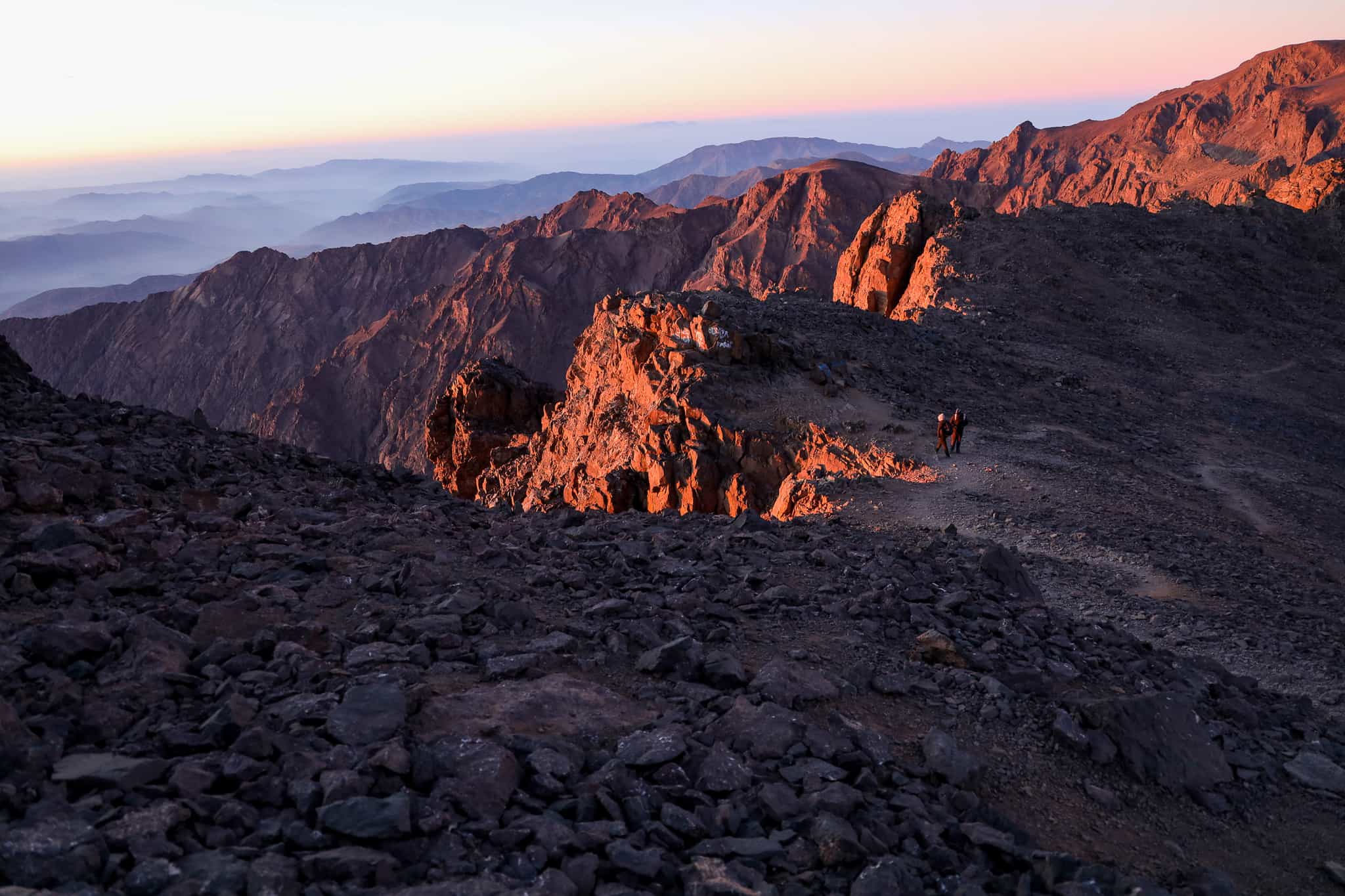
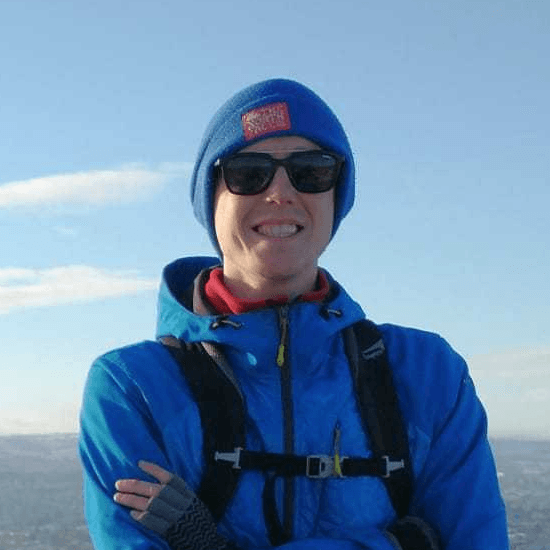
Need help finding flights?
From logistics and how to get there, to fitness, group dynamic and trip difficulty, Rory and his team of friendly experts are on hand to help.
We've got your back
Guaranteed to run
All Much Better Adventures trips are now guaranteed to run. Once you’ve booked your spot you can immediately make your travel arrangements, no uncertainty, no hanging about (excludes 'request to book' departures). Full details
Flexible payments
Secure your spot with the minimum deposit and pay off the remaining balance in as many instalments as you like, with no interest or fees. Full details
Happiness Guarantee
We’re so confident you’ll have an amazing time we’ll put our money on it. Full details
Full financial protection
To give you complete peace of mind Much Better Adventures is backed by ABTOT, ABTA and ATOL memberships. Full details
Tried & Trusted
Much Better Adventures is rated ‘Excellent’ on Trustpilot with over 1000 verified trip reviews averaging 4.8/5.
Connect before you go
You'll be invited to join a WhatsApp group to get to know each other before your big adventure together. Full details
DEPARTURE DATES
Wednesday 13th August 2025
to Friday 22nd August 2025
Last Minute Offer - Next 2 spots available at 10% off





